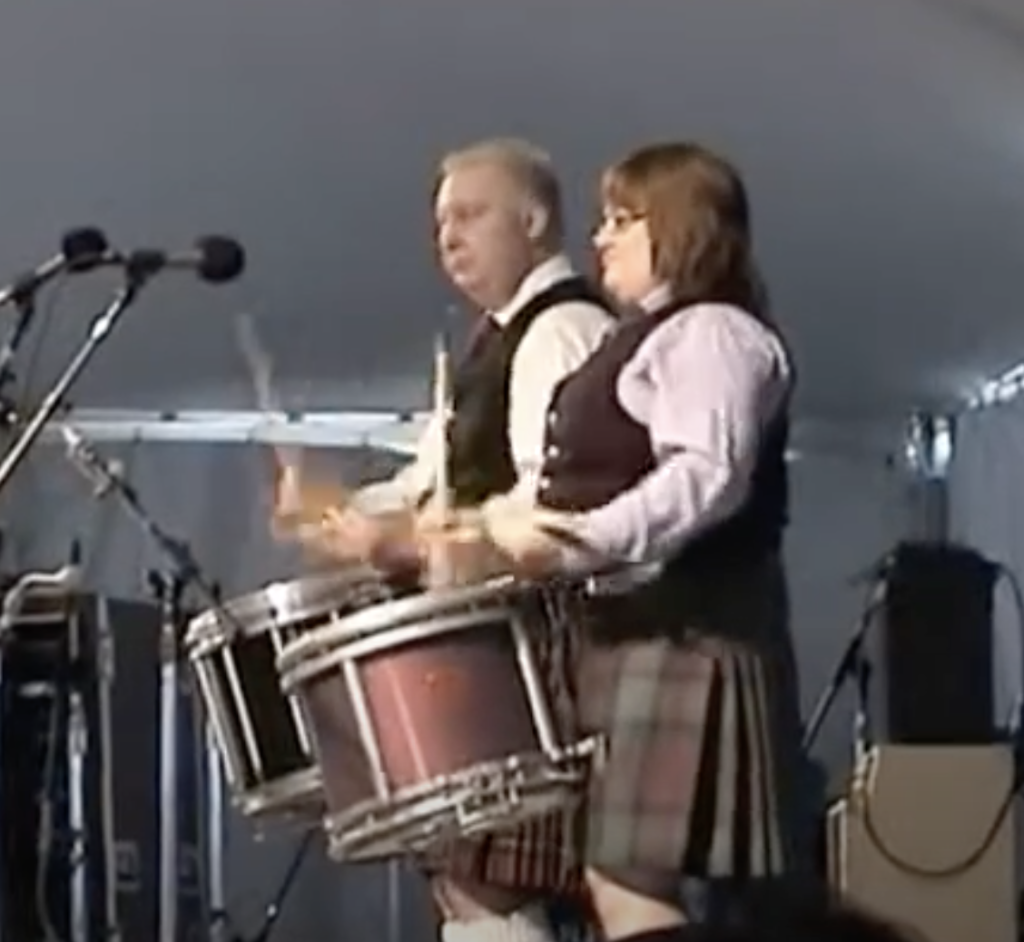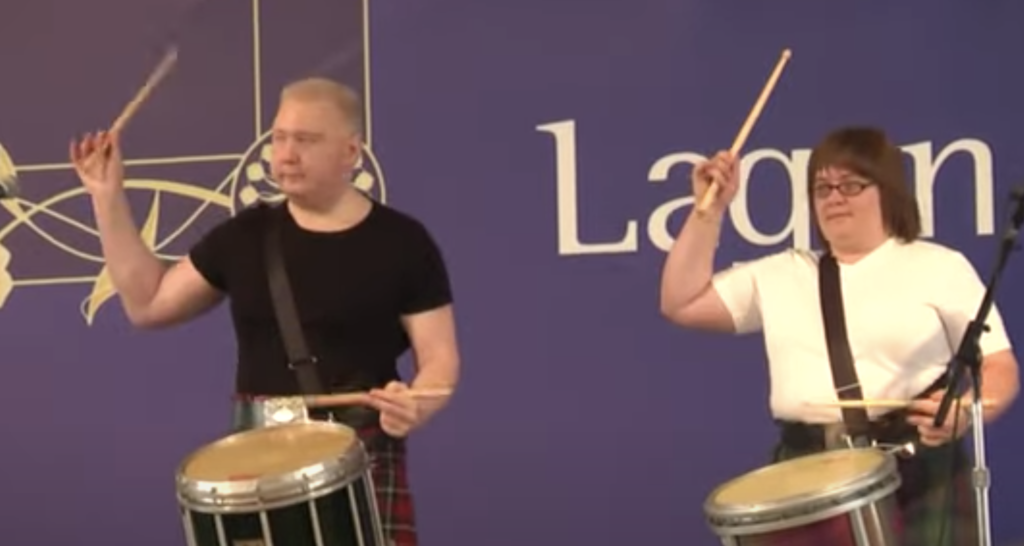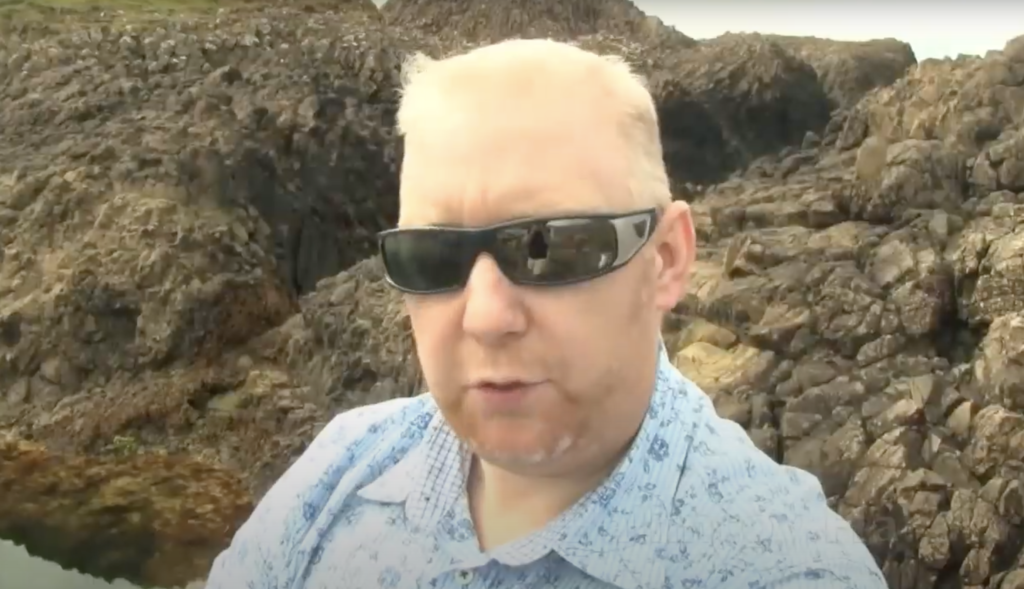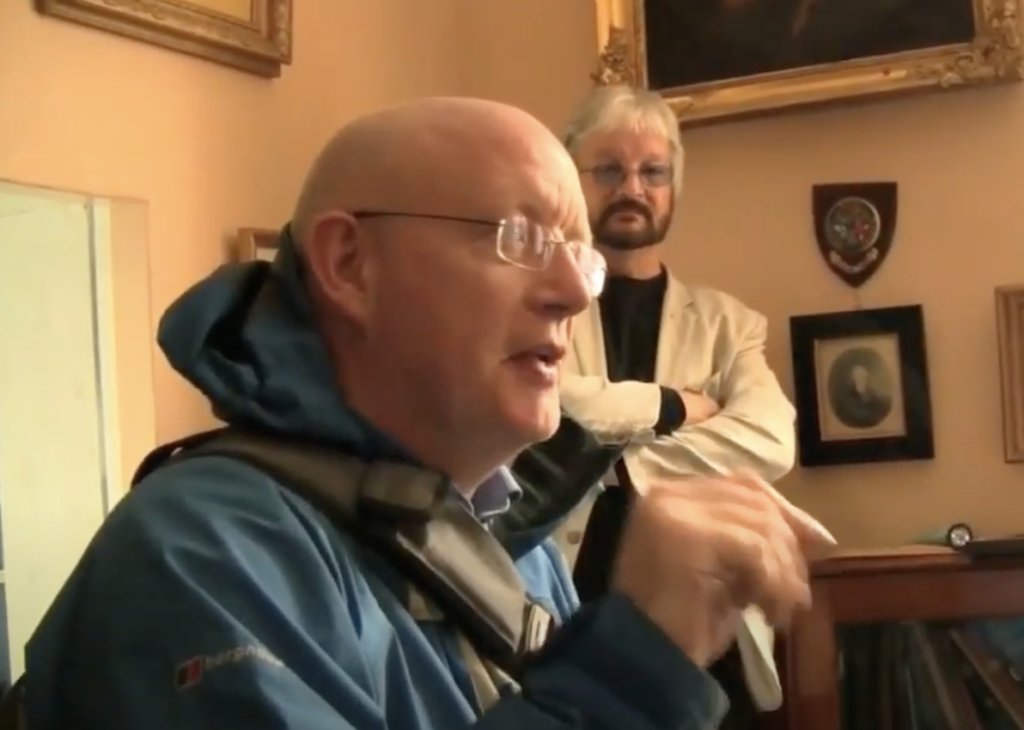During the summer of 2007, I was running on the National Mall during the Smithsonian Folklife Festival which focused on Northern Ireland. The country was experiencing a seminal moment following a ten-year period of stability and peace. Over 100 participants from Northern Ireland, performers, artists, craftspeople, cooks, etc came to DC to explain, demonstrate and celebrate life in their homeland. It was during one of the programs that I ran into Mark Wilson and Lee Dawson, snare drummers.

“Why don’t you join us at the Keybridge Marriott after the festival,” Mark suggested.
“Yeah, it’s the after-hours entertainment and party of all the performers,” Lee added.
When I arrived, there were Scottish bagpipers along with colorfully dressed people from the Bahnar tribe of central Vietnam. There was much music, dancing and food.
“What kind of sandwich is this?” Mark asked.
“It’s a Banh Mi, a Vietnamese baguette,” I responded.
“Wow, the crust is super thin and crispy. What’s in the filling?” Lee asked.
“Glad you like it. It has pork belly, grilled pork, pate, cucumbers, cilantro and jalapeños,” Mr Nguyễn, who was responsible for narrating the tall tales of the Mekong Delta, replied.
“Geez, I’ve grown up loving corn beef and Ulster fry, but I really appreciate the opportunity to try different cuisines and types of food,” Mark added.
We stayed up late meeting new people, dancing and drinking Guinness. When it got late, we hung out by the pool and went for a dip.
“You guys should take a tour of the Pentagon tomorrow,” I suggested. “Would love to show you where I work.”
“Would love that,” Mark replied. “And one day, I hope to show you my stomping grounds of Northern Ireland.”

So three years later, I had the opportunity to do just that. I hopped on a train to Northern Ireland to see Mark and Lee. My folklife friends took the entire day off from work to give me a grand tour of the Antrim Coast showcasing the scenic, untouched Northern Ireland coastline — one of the most beautiful in the world, and the Giant’s Causeway, a World Heritage Site, declared by the Irish as the 8th Wonder of the World
Mark created an impromptu limerick which we posted on Youtube.
Here we are in Giant’s Causeway
Where 40,000 columns of basalt rock stand today
The volcano erupted
The larva cooled
But before there was science
There was the Legend of Finn McCool
It is called the Giant’s Causeway
It was made by Finn McCool
It’s really just the start of a stepping stone tool
To get across to Scotland
To fight with Bennadonner
Through many disagreeements
They pulled each other asunder
He took the cloth much
And try and try as he may
He never his his target
But he made us our Loch Neagh
The mud landed in the water
And with all the might he can
He only then succeeded
In making the Isle of Man
So he took to playing the organ
And over here were his pipes
He played the Sash, Derry’s Walls and Billyboys
But started loads of fights
Cuz’ the Scottish Giant thought they were his tunes
But little did he knew
That the music for Highland bagpipes
Came from across there near Dunloe
We then visited Balintoy Harbour in the Antrim Coast, 13 kms away.
“Haven’t been back in 28 years. When I was nine years old, my family would come here for the summer holidays, and I would dive off these rocks, swim across this pool of water, climb up the natural stairway and dive again. Would do this all day long,” Mark reflected.

Mark Wilson in Balintoy Harbour
“When you return to the Capital City, please let all your friends and runners know how beautiful the Emerald Isle truly is,” Mark requested. Then I gave him and Lee a big hug and wondered where in the world we would meet again.
I got to do a lot of quality sightseeing and made new friends who taught me a lot about the precious value of life and respecting other people. I learned about the sectarian conflict and how it is important to learn and understand each other.
Belfast is known for its troubles and religious conflict. For over 25 years, the IRA (Irish Republican Army) was very busy here. On Bloody Friday 1972, the IRA set off 22 bombs killing 9 people and injuring 120. When the bombs dropped, people did not know what to do. There were no bomb shelters. They did not know whether to run, hide or stay sheltered at home. The IRA hoped they would be just as successful in catching the government and the people unprepared in hopes of getting Northern Ireland out of the UK.
Truly, there was only one main pursuit: The Irish Republicans wanted a united Ireland. However, there was never such a state as a united Ireland. As an outsider looking in, I didn’t truly understand what the big deal was, other than the name and the unity. Today Northern Ireland and Ireland enjoy an open border where citizens could cross either side freely without having to produce a passport.
But 10 years ago the border was filled with concrete barriers, barbed wires and bombs.
“I’m glad you took some time to research our history,” Mark said. “It was very important for the parties to understand our differences so that the IRA and the British government could properly negotiate.”

The last place I visited was the First Presbyterian Church where I met tour guide Arthur Magee.
“Belfast has been a by-word for the troubles, sectarian strife and intolerance. If you come nigh you will see a city where on a micro level, people are building bridges. The most important bridge that is been built is in each and every single person here. That bridge is between who you actually are and how you see yourself. Whether you’re part of the problem and looking back and blaming other people, or whether you’re part of the solution and reaching out and seeing other human beings, as exactly that, human beings. We’re no different from any other place in this planet. We’re products of circumstances and history. And the same problems that exist in Belfast apply everywhere. Belfast isn’t a by-word for intolerance, it’s a beacon for hope. It’s a place where people are reaching out and it shows the possibility of change. And it also shows the importance of each and single person to reach out, to build bridges and to see other people as exactly that, other people.”
This whole trip was more eye-opening than attending class at GWU, and definitely a lot more fun. No encyclopedia, no ebook reader, no youtube video could teach me life’s social skills better than what I learned in Barcelona, Normandy or Belfast.
